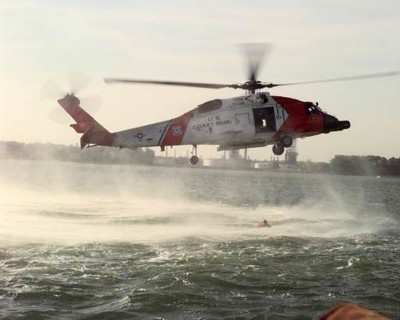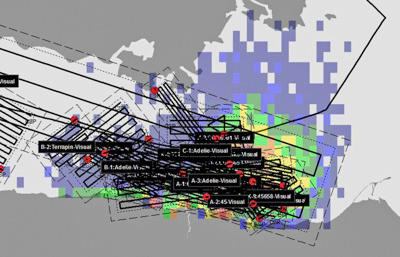Fri, Jan 29, 2021
Search After Mayday Call From C-170 Has Failed To Turn Up Plane Or Pilot
We usually love featuring search and rescue stories from our friends at the Coast Guard... but this is not one of those stories. The U.S. Coast Guard and partner agencies suspended search efforts late Wednesday for a missing pilot in the Strait of Juan de Fuca.

The man took off mid-day Tuesday in his Cessna 170A from Ketchikan, Alaska, with the intended destination of Port Angeles.
"Suspending search efforts is always an extremely tough decision," said Capt. Nathan Coulter, Chief of Search and Rescue for the U.S. Coast Guard's 13th District.
"This was an extensive search (see search pattern illustration below) involving close coordination between numerous federal, state and local agencies. A huge thanks to the many women and men from the Canadian Coast Guard, Royal Canadian Air Force, U.S. Navy, U.S. Coast Guard, and good Samaritans who assisted in planning and carrying out this search effort. As is often the case, these boat, helicopter, and airplane crews answered the call instinctively and without delay to come to the aid of another. Our thoughts and prayers go out to the family and friends of the pilot involved."

On Tuesday night shortly before 5 p.m., a mayday call from the man was relayed to Coast Guard units in Seattle. Sector Puget Sound command center immediately started search and rescue efforts after the report.
Before the single-engine airplane went down, the pilot described land formations he could see and ships that were in the area. The Coast Guard built a search area based upon that information. Most of the area covered consisted of the waters north and northwest of Port Angeles, up to the international boundary line.
Rescue crews completed 22 different search patterns and covered 1,170 square miles over the 23 hours of searching.
Crews and assets that assisted in the search:
- Coast Guard Cutter Adelie and crew, an 87-foot patrol boat;
- Coast Guard Cutter Terrapin and crew, an 87-foot patrol boat;
- Station Port Angeles 45-foot Response Boat-Medium and crew;
- Air Station Port Angeles MH-65 Dolphin rescue helicopter crew;
- HH-60 Blackhawk helicopter crew from U.S. Naval Air Station Whidbey Island;
- Canadian Coast Guard cutter Sir Wilfred Laurier and crew;
- Royal Canadian Air Force CC-115 Buffalo and crew;
- Royal Canadian Air Force CH-149 Cormorant and crew;
- Good Samaritan vessel crews.
More News
With Testing Soon Complete, Launch Preparations Begin in Earnest Sierra Space's Dream Chaser has been put through the wringer at NASA's Glenn Armstrong Test Facility in Ohio, but w>[...]
Takeoff Roll The process whereby an aircraft is aligned with the runway centerline and the aircraft is moving with the intent to take off. For helicopters, this pertains to the act>[...]
“We’re proud of the hard work that went into receiving this validation, and it will be a welcome relief to our customers in the European Union. We couldn’t be mor>[...]
"Aircraft Spruce is pleased to announce the acquisition of the parts distribution operations of Wag-Aero. Wag-Aero was founded in the 1960’s by Dick and Bobbie Wagner in the >[...]
IDENT Feature The special feature in the Air Traffic Control Radar Beacon System (ATCRBS) equipment. It is used to immediately distinguish one displayed beacon target from other be>[...]
 Sierra Space Repositions Dream Chaser for First Mission
Sierra Space Repositions Dream Chaser for First Mission ANN's Daily Aero-Term (05.10.24): Takeoff Roll
ANN's Daily Aero-Term (05.10.24): Takeoff Roll Aero-News: Quote of the Day (05.10.24)
Aero-News: Quote of the Day (05.10.24) Aero-News: Quote of the Day (05.11.24)
Aero-News: Quote of the Day (05.11.24) ANN's Daily Aero-Term (05.11.24): IDENT Feature
ANN's Daily Aero-Term (05.11.24): IDENT Feature




